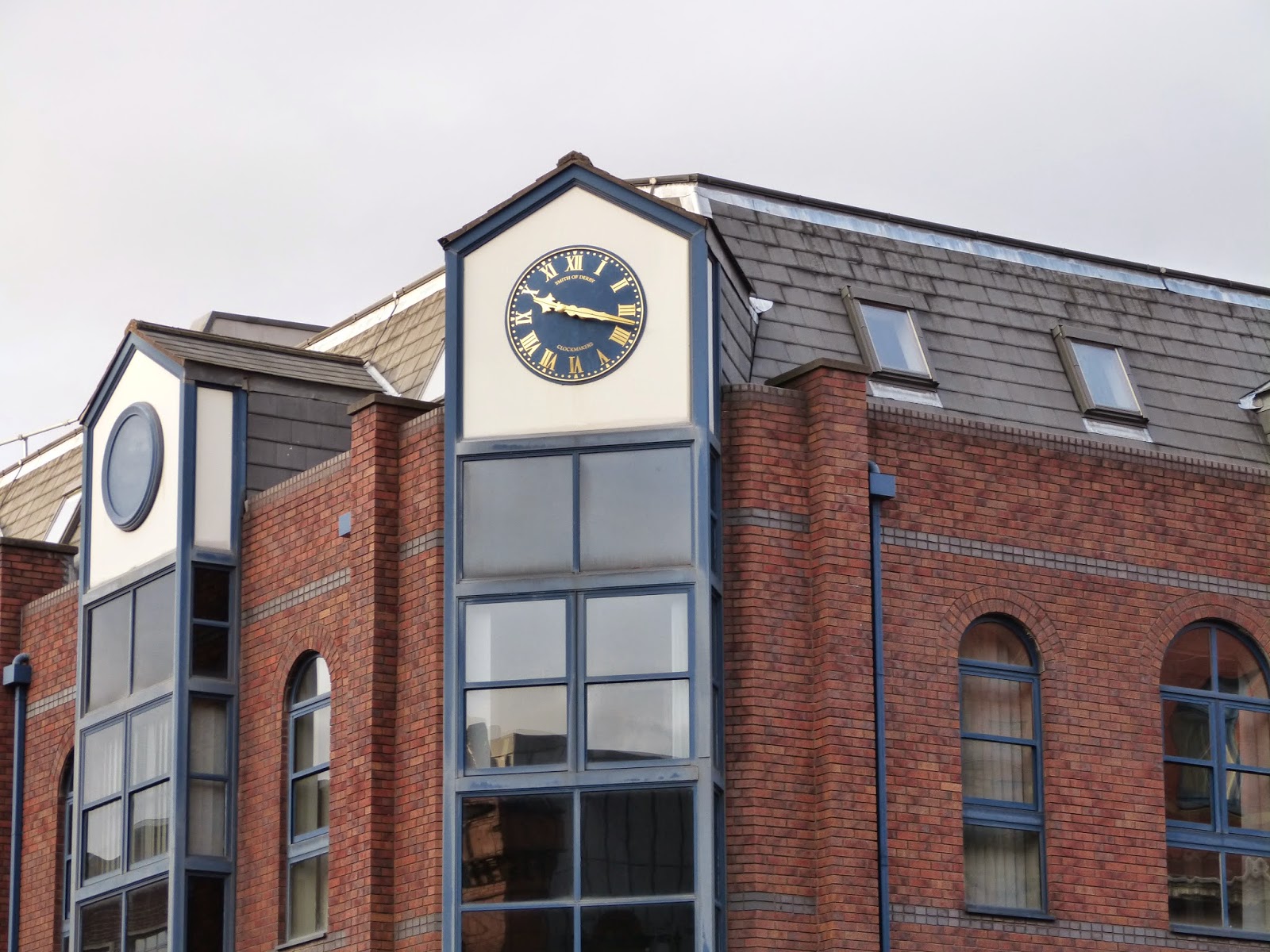The clock tower stands proud over this magnificent building. The effect is slightly lessened by the branch of Tesco that has been built around it, but at least that this has meant that the originally building has been preserved. It is also immensely pleasing that the old building is not, as I originally guessed, just a grand entrance to the supermarket, but is still a working library.
The foundation stone was laid in 1891, and the library was opened on 7 January 1893. The clock tower is 65 feet tall. Further information can be found on the Birmingham City Council website (www.birmingham.gov.uk), including the fact that in 1895 a man was sentenced to six weeks in prison with hard labour for throwing books around the library and resisting arrest.
The library was due for demolition to make way for the new Middle Ring Road, but was saved due to a public outcry. A big boo to the lunacy of 1960s road building, and a big hurrah to the people of Birmingham.
We next move to the Jewellery Quarter, and the Chamberlain clock at the junction of Vyse Street and Warstone Lane (not to be confused with the Joseph Chamberlain Memorial clock tower at the University of Birmingham which we will visit later).
As shown on the plate affixed to the base, the clock was erected in 1903 in commemoration of Joseph Chamberlain, the Secretary of State for the Colonies.
Walking north from the Chamberlain clock up Vyse Street we come to the Design Centre.
And immediately opposite is the Jewellery Quarter Conference Centre.
The only clock face is directed not on to Vyse Street as you might expect, but faces the Warstone Lane cemetery. In Birmingham even the dead need to know the time.
Continuing north on Vyse Street brings us to the Jewellery Quarter railway station, which has a modern clock in its small booking hall.
I have to say it is a clever and pleasing design.
Details of its provenance are shown on a small plate beneath the clock.
Continuing to the end of Vyse Street, we come to Great Hampton Street, where we find this clock on the side of one of the many Victorian commercial buildings lining this arterial route from the city centre.
A jump now to Newhall Street and its junction with Charlotte Street, where we can see this modern example by Smith of Derby. (Details of this clock manufacturer can be found in the book "The Smiths of Derby - A Journey Through Time" by Max Craven (2011)).
Around the corner is the church of St Paul.
The church is in a delightful little area just to the west of the city centre. The church was completed in 1779, with a spire added in 1823.
Finally for this part of the tour, two commercial buildings. The first is the offices of the Birmingham District Amal branch of the CWU (the Communications Workers Union) at 46-48 Summer Lane.
The second is this rather odd looking cuboid clock on the top of FGF (suppliers of insulation and other building materials) in Shadwell Street.
.JPG)
.JPG)
.JPG)
.JPG)
.JPG)
.JPG)
.JPG)


.JPG)
.JPG)
.JPG)
.JPG)
.JPG)
.JPG)
.JPG)









.JPG)
.JPG)
.JPG)
.JPG)
.JPG)
.JPG)
.JPG)
No comments:
Post a Comment